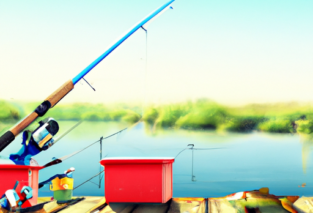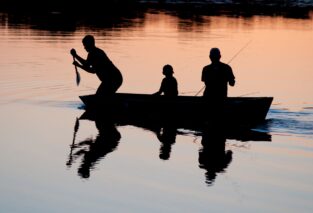If you’re an avid ice fisher or looking to give it a try, you may be wondering if it’s possible to go ice fishing without a heater. In this article, we’ll explore essential tips and techniques that can help you stay warm and comfortable on the ice without relying on a heater. From choosing the right clothing to utilizing natural insulation, we’ll provide you with all the information you need to enjoy a successful ice fishing expedition, even in the absence of a heater. So grab your gear and get ready to hit the ice with confidence!
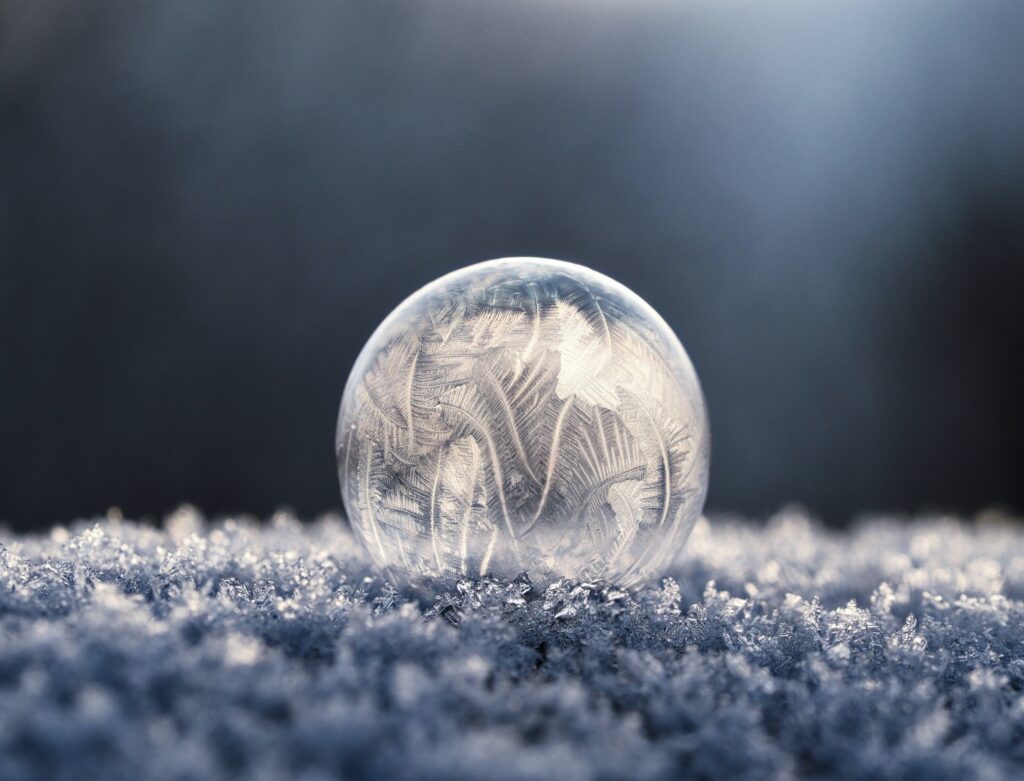
Gear and Equipment
When it comes to ice fishing, having the right gear and equipment is crucial for a successful and enjoyable experience. Here are some essential items that you should have in your ice fishing arsenal:
Ice Fishing Rod
An ice fishing rod is specifically designed for ice fishing purposes. These rods are shorter in length than regular fishing rods, ranging from 24 to 36 inches, allowing for better control and maneuverability in the confined space of an ice shelter. They also have sensitive tips that can detect even the subtlest of nibbles from the fish below.
Ice Fishing Reel
A good quality ice fishing reel is essential for smoothly reeling in your catch. Look for reels that are specifically designed for ice fishing, as they are built to withstand the harsh winter conditions and have features such as anti-freeze lubrication systems to prevent ice buildup.
Fishing Line
Choosing the right fishing line is crucial for ice fishing. Opt for a lightweight yet strong fishing line with low visibility, as fish in icy waters tend to be more cautious. Braided lines are a popular choice due to their high strength and sensitivity, but monofilament lines also work well for ice fishing.
Bait
Selecting the right bait is essential for enticing and catching fish in icy waters. Natural bait such as minnows, worms, or wax worms are popular choices for ice fishing. You can also use artificial bait such as jigs, spoons, or soft plastic lures, which can mimic the movement of prey and attract fish.
Hooks
Choose hooks that are appropriate for the size of fish you are targeting. Make sure the hooks are sharp and securely attached to your fishing line to increase your chances of hooking a fish and preventing it from escaping.
Ice Auger
An ice auger is a specialized tool used to drill holes in the ice. There are manual augers that require physical effort to drill the holes and gas-powered augers that make the task quicker and easier. Consider the ice thickness and your physical ability when choosing an ice auger.
Ice Scooper
An ice scooper is used to remove ice shavings and slush from the drilled holes. This helps to keep the holes clear and prevent ice from obstructing your fishing line.
Ice Shelter
An ice shelter, also known as an ice hut or ice shanty, provides protection from the elements while ice fishing. There are different types of ice shelters available, ranging from portable tents to permanent structures. Choose an ice shelter that suits your needs and provides adequate space for you and your fishing equipment.
Fishing Tackle Box
A fishing tackle box is an essential accessory for keeping all your fishing gear organized and easily accessible. It should have compartments for storing hooks, lures, weights, and other small fishing accessories.
Having the right gear and equipment is the first step to a successful ice fishing trip. Make sure to invest in high-quality gear that is specifically designed for ice fishing to ensure a comfortable and productive experience on the ice.
Choosing the Right Location
Selecting the right location for ice fishing is crucial for increasing your chances of catching fish. Here are some tips for choosing the perfect fishing spot:
Researching Potential Fishing Spots
Before heading out on your ice fishing adventure, take the time to research potential fishing spots in your area. Online resources, fishing forums, and local fishing guides can provide valuable information about popular ice fishing locations, fish species present, and recent fishing reports. Pay attention to any recommended spots and take note of their accessibility.
Checking Local Regulations
Ensure that you are aware of and comply with all local fishing regulations and licensing requirements. Different regions may have specific rules regarding bag limits, fish size limits, and protected species. Familiarize yourself with the regulations to avoid any legal issues and to promote sustainable fishing practices.
Considering Ice Thickness and Safety
Ice thickness is a crucial factor to consider when choosing a fishing spot. Thick, solid ice is necessary to ensure safety while ice fishing. Check with local authorities or ice fishing clubs for information on ice conditions and guidelines for safe ice thickness. Avoid fishing on thin ice or areas with currents, as these can be dangerous.
Finding Where the Fish Are
To maximize your chances of catching fish, it’s important to find where the fish are located beneath the ice. Research the behavior and habitat preferences of the fish species you are targeting. Look for areas with underwater structures such as weed beds, drop-offs, or submerged rocks, as these provide shelter and food for fish.
Using electronic fish finders or scouting techniques such as drilling test holes and using underwater cameras can help you locate fish. Remember that fish activity can vary depending on the time of day and weather conditions, so be prepared to adapt your fishing strategy accordingly.
Choosing the right location requires careful planning and research. By considering factors such as local regulations, ice thickness, and fish behavior, you can increase your chances of having a successful ice fishing adventure.
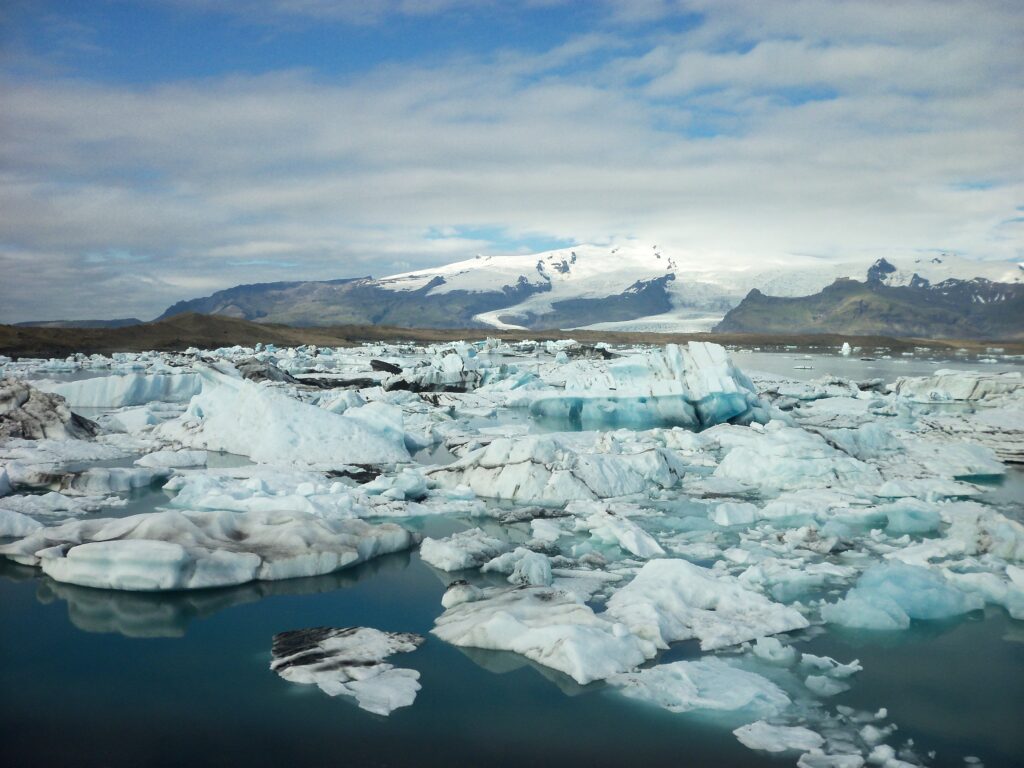
Preparation and Safety
Proper preparation and safety measures are vital for a safe and enjoyable ice fishing experience. Here are some essential tips to follow:
Dress in Layers
Layering your clothing is key to staying warm and comfortable while ice fishing. Start with a moisture-wicking base layer to keep sweat away from your body. Add insulating layers such as fleece or wool to provide warmth, and finish with a waterproof outer layer to protect against wind and moisture.
Wear Appropriate Footwear
Insulated and waterproof boots are essential for keeping your feet warm and dry on the ice. Look for boots with thick insulation, good traction, and ankle support. Consider adding removable crampons or ice cleats to improve stability and grip on slippery surfaces.
Bring Safety Equipment
It’s important to be prepared for any unexpected situations while ice fishing. Essential safety equipment includes a life jacket or floatation device, ice picks or ice claws for self-rescue, a first aid kit, and a throw rope for emergency situations. Make sure to have a fully charged cell phone and carry a whistle or signaling device for attracting attention if needed.
Inform Someone About Your Plans
Before heading out onto the ice, inform someone about your fishing plans. Share details such as the fishing spot you’ll be visiting, expected return time, and any emergency contact numbers. This ensures that someone is aware of your whereabouts and can take action if you encounter any difficulties.
Taking the time to properly prepare and prioritize safety measures is essential for a successful ice fishing trip. By dressing appropriately, having the right equipment, and informing someone about your plans, you can enjoy your ice fishing adventure with peace of mind.
Techniques for Ice Fishing
Ice fishing requires different techniques than traditional open-water fishing. Here are some essential techniques to master for a successful ice fishing experience:
Setting Up Your Ice Shelter
Before you start fishing, set up your ice shelter to provide protection from the wind and cold. Follow the manufacturer’s instructions for assembly and make sure it is securely anchored to prevent it from blowing away. Once inside, organize your fishing gear and ensure that you have enough space to move around comfortably.
Drilling Holes in the Ice
Drilling holes in the ice is necessary for accessing the water below. Use an ice auger to drill holes of the appropriate size for the fish species you are targeting. It’s important to space your holes strategically to cover a larger area and increase your chances of finding active fish.
Using Tip-Ups
Tip-ups are a popular ice fishing tool that allows you to fish multiple holes simultaneously. These devices consist of a flag system attached to a spool of fishing line, which signals when a fish has taken the bait. Set up your tip-ups by drilling holes, attaching the tip-up to the hole, and positioning the bait at the desired depth. When a fish strikes, the flag will be triggered, indicating that you have a bite.
Using an Ice Fishing Rod and Reel
Using an ice fishing rod and reel is another effective technique for catching fish. Choose a lightweight rod with a sensitive tip and a reel that is suitable for ice fishing. Bait your hook with either natural bait or artificial lures, and drop it through the hole into the water. Gently jig the bait up and down to attract fish, and be prepared to set the hook when you feel a bite.
Mastering these ice fishing techniques takes practice and patience. Experiment with different methods and adapt your approach based on the behavior of the fish and the conditions of the day.
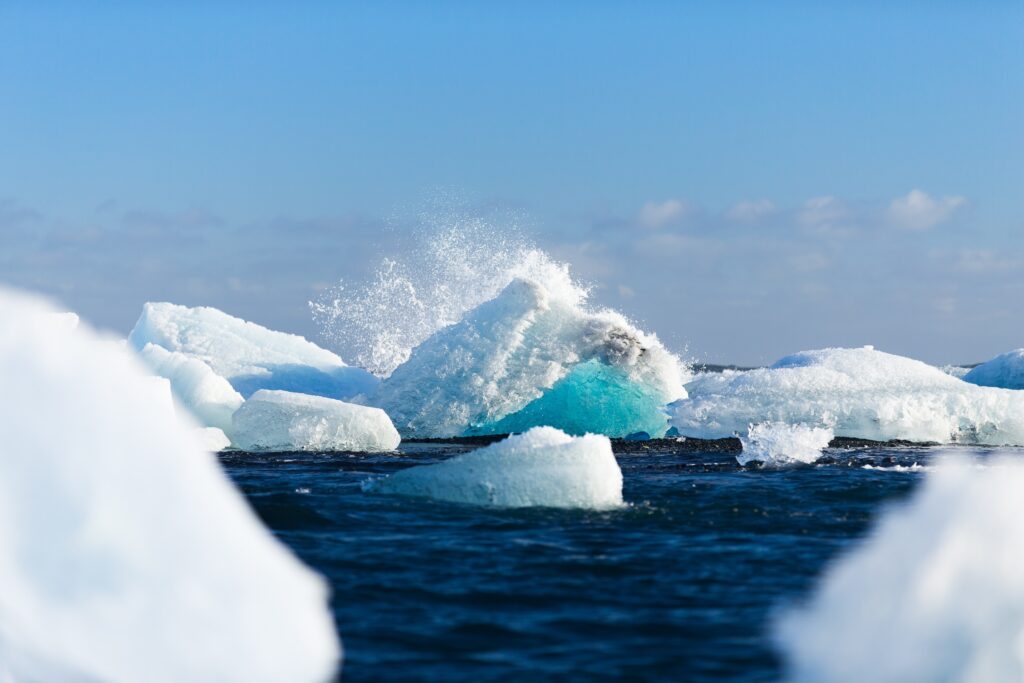
Bait and Lures
Selecting the right bait and lures is essential for enticing fish to bite. Here are some popular options for ice fishing:
Natural Bait
Natural bait such as live minnows, worms, or wax worms can be highly effective for attracting fish. Rig them onto your hook using appropriate techniques and adjust the depth at which you present them to the fish. Remember to handle live bait with care and ensure that you are compliant with local fishing regulations regarding the use of live bait.
Artificial Lures
Artificial lures can be equally effective for catching fish through the ice. Jigs, spoons, and soft plastic lures are popular choices. These lures can mimic the movement of prey and attract the attention of nearby fish. Experiment with different colors, sizes, and patterns to find what works best for the fish species you are targeting.
Jigging Techniques
Jigging is a technique that involves imparting motion to your bait or lure to attract fish. The key is to create an enticing movement that mimics the natural behavior of prey. This can be achieved by gently raising and lowering your rod tip or by imparting a more aggressive jigging motion. Pay attention to the fish’s response and adjust your jigging technique accordingly.
The choice of bait and lures depends on various factors, including the type of fish you are targeting and the local fishing conditions. Experiment with different options and techniques to find what works best for you.
Reading the Ice
Understanding different ice conditions and being able to identify potential hazards is crucial for ensuring your safety while ice fishing. Here are some essential tips for reading the ice:
Understanding Different Ice Conditions
Different ice conditions require different precautions. Clear blue ice is usually the strongest and safest, while milky or slushy ice can be weaker. Be cautious when encountering ice with visible cracks, heaves, or pressure ridges, as these indicate instability. Observe the color and texture of the ice as you drill test holes, and consult local experts or fishing guides for information on the current ice conditions.
Identifying Potential Hazards
While the ice may appear solid, there can be potential hazards hidden beneath the surface. Watch out for areas with open water, which can indicate weak spots or areas of thin ice. Beware of ice near moving water, such as inlets or outlets, as it can be thinner and weaker. Pay attention to changes in ice color or texture, as these can indicate varying levels of strength.
Evaluating Ice Thickness
Ice thickness is a critical factor in ensuring your safety while on the ice. Use an ice auger to drill test holes at regular intervals and measure the thickness using a designated ice thickness gauge. Consult local guidelines or experts for recommended minimum ice thicknesses. Remember that ice thickness can vary across a body of water, so be cautious and avoid areas of thin ice.
Reading the ice is a skill that develops with experience. Be vigilant, stay alert to potential hazards, and prioritize your safety while enjoying the excitement of ice fishing.

Fishing Strategies
To optimize your chances of catching fish while ice fishing, it’s important to employ effective fishing strategies. Here are some tips to enhance your success:
Finding the Right Depth
Determining the depth at which the fish are feeding is crucial for increasing your chances of getting bites. Experiment with different depths by adjusting the position of your bait or lures. Start near the bottom and gradually work your way up until you find the most active zone. Pay attention to the fish finders or watch for visual cues such as fish activity or suspended baitfish.
Using Fish Finders
Fish finders or depth finders are valuable tools for ice fishing. These devices use sonar technology to locate fish and display their depth, as well as underwater structures and changes in bottom composition. Invest in a quality fish finder and learn how to interpret the readings to identify potential hotspots below the ice.
Employing Different Fishing Techniques
Fish can exhibit varying preferences for different fishing techniques. Experiment with jigging, dead-sticking, and other techniques to determine what the fish are responding to. If one technique isn’t working, don’t be afraid to switch it up and try something different. Pay attention to the behavior of the fish and adapt your fishing strategies accordingly.
By fine-tuning your fishing strategies and being adaptable, you can increase your chances of having a successful ice fishing outing.
Staying Warm Without a Heater
Ice fishing often involves long hours spent in cold temperatures, but there are ways to stay warm without relying on a heater. Here are some tips for staying comfortable:
Layering Clothing for Insulation
Dressing in layers is one of the best ways to stay warm while ice fishing. Layering allows for better temperature regulation, as you can add or remove layers based on your comfort level. Start with a moisture-wicking base layer to keep sweat away from your body. Add insulating layers such as fleece or wool, and finish with a waterproof outer layer to protect against wind and moisture.
Using Hand and Foot Warmers
Hand and foot warmers can provide additional warmth and comfort while ice fishing. These small, disposable packets generate heat when exposed to air, and they can be placed inside your gloves, boots, or pockets. Consider investing in reusable hand and foot warmers for a more sustainable option.
Insulated Seating Options
Sitting on the cold ice for extended periods can cause discomfort and lower your body temperature. Invest in an insulated ice fishing chair or seat pad to provide insulation and prevent heat loss through direct contact with the ice. These insulated seating options are lightweight and easily transportable.
Wind Protection
Wind can significantly affect your comfort level while ice fishing. Use a windproof outer layer or set up windbreaks around your ice shelter to block the wind and create a more comfortable environment. Position your shelter strategically to take advantage of natural windbreaks such as trees or the contour of the land.
By implementing these tips, you can stay warm and comfortable on the ice without relying on a heater.
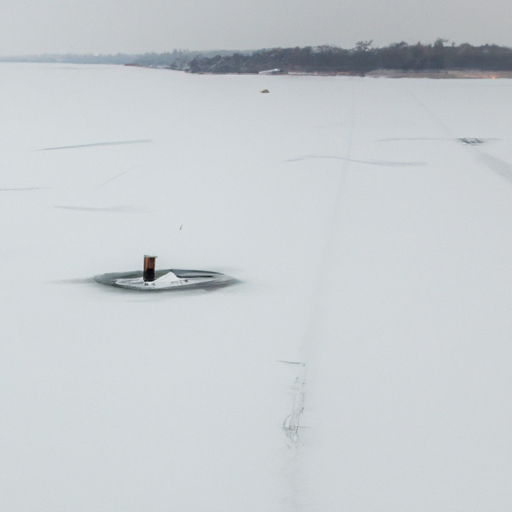
Tips for Staying Comfortable
In addition to staying warm, it’s essential to prioritize your overall comfort while ice fishing. Here are some additional tips to make your ice fishing experience more enjoyable:
Pack Snacks and Warm Beverages
Pack a variety of snacks and warm beverages to keep your energy levels up and provide a small boost of warmth. Consider items such as trail mix, granola bars, sandwiches, and hot drinks in thermoses. Snacking and sipping on warm beverages can elevate your mood and make your ice fishing trip more enjoyable.
Take Breaks Indoors
Taking breaks indoors is another way to ensure your comfort during an ice fishing expedition. If you have access to a heated ice shelter or nearby warming hut, utilize it for short breaks to warm up and recharge. Spending time in a more comfortable environment can invigorate you for more fishing action.
Stay Hydrated
Although you may not feel as thirsty in colder temperatures, it is crucial to stay hydrated while ice fishing. Dehydration can occur even in cold conditions, so make sure to drink plenty of fluids throughout the day. Bring a thermos or insulated water bottle filled with your preferred beverage and sip regularly to maintain hydration.
Prioritizing your comfort will contribute to a more enjoyable ice fishing experience. By packing snacks and warm beverages, taking breaks indoors, and staying hydrated, you can make the most of your time on the ice.
Making the Most of Your Catch
One of the joys of ice fishing is the opportunity to catch delicious fish and take them home for a meal. Here are some tips for handling, releasing, and preparing your catch:
Properly Handling and Releasing Fish
Handle the fish you catch with care to minimize stress and injury. Wet your hands before handling the fish to protect their protective slime layer. If you plan to release the fish, do so quickly and gently. If you want to keep the fish, consider selectively harvesting a few for consumption while releasing the rest.
Cleaning and Preparing Your Fish
If you decide to keep your catch, it’s important to properly clean and prepare the fish for cooking. This is best done soon after catching while the fish is still fresh. Use a sharp fillet knife to remove the scales, gut the fish, and remove the head if desired. Rinse the fish thoroughly under cold water to remove any blood or debris.
Cooking Your Catch on the Ice
How about cooking your catch right there on the ice? With the right tools and preparation, you can enjoy a fresh fish meal right on the spot. Portable stoves, grills, or even open fires can be used to cook your fish. Wrap the cleaned fish in aluminum foil with spices, butter, and vegetables, and cook until the fish is flaky and cooked through. Don’t forget to pack the necessary utensils and ingredients for a delicious ice fishing feast.
By handling your catch with care, cleaning fish properly, and cooking them to perfection, you can make the most of your ice fishing experience by enjoying a tasty meal.
Ice fishing without a heater is entirely possible and can be an incredibly rewarding experience. By equipping yourself with the right gear, choosing the right location, and following essential tips and techniques, you can enjoy a safe and successful ice fishing adventure. Remember to prioritize your comfort, stay warm, and make the most of your catch. So grab your gear, venture out onto the ice, and embrace the unique excitement of ice fishing!



